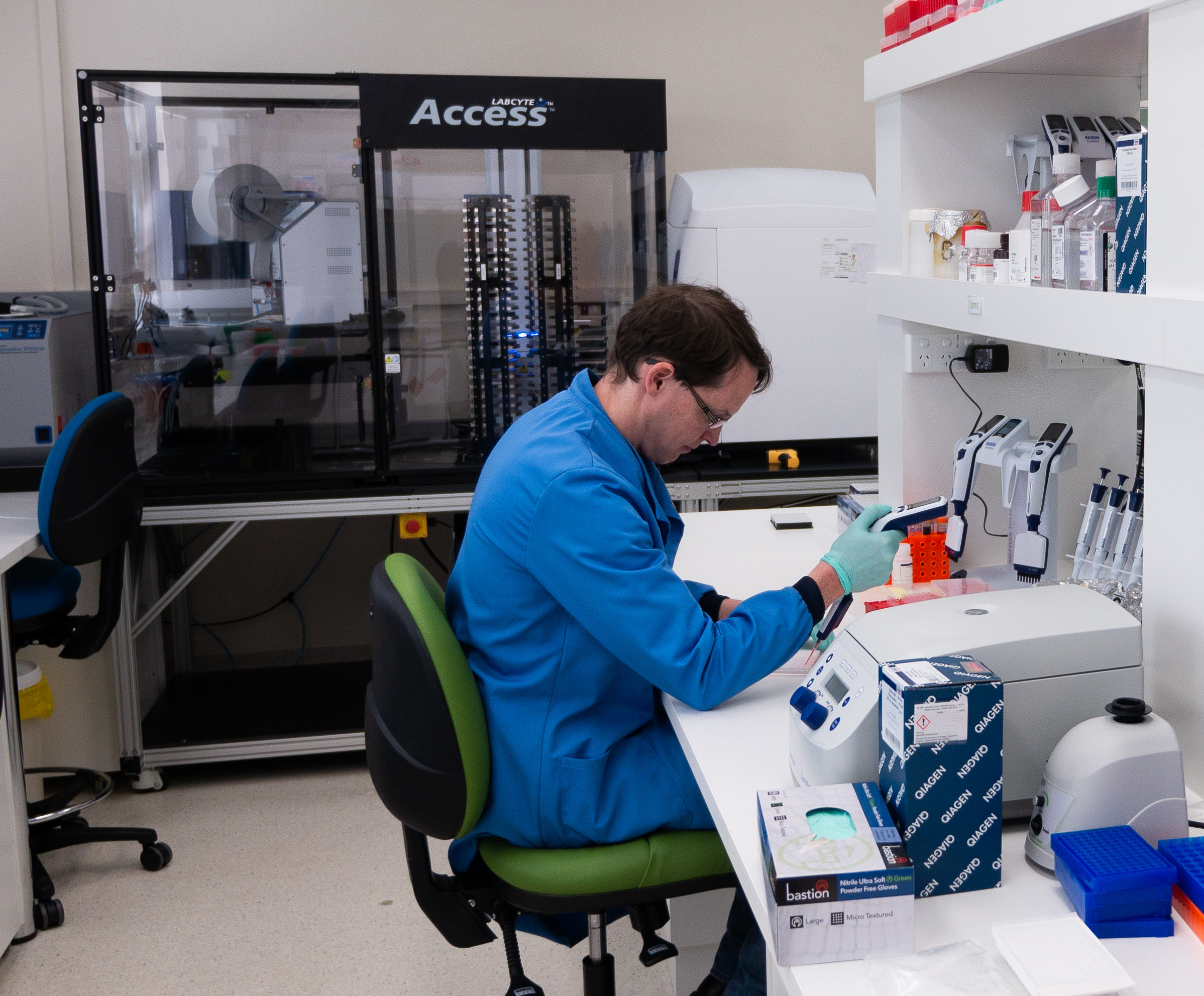Environomics = environmental genomics.
The Environomics Future Science Platform at CSIRO is using genomics, bioinformatics and nanotechnologies, to reinvent how we measure and monitor ecosystem health, change and threats, and find new resources in nature.
The challenge
Many specimens in natural history collections, especially those collected decades ago, have been preserved in ways that don’t prevent DNA degrading. This limits their usefulness for molecular genetics research.

Our challenge is to develop platform technologies for generating DNA sequences from specimens, irrespective of taxonomic group or specimen age. This includes primary type specimens and other high-value historic specimens.
What we're doing
The National Research Collections Australia at CSIRO are Australia's primary biodiversity repository. They contain more than 15 million specimens of insects, vertebrates, plants, algae and lichens, many of which are expertly identified.
We are working with different kinds of specimens to develop new platform technology and processing pipelines for high-throughput genome skimming of collection specimens – from sample to analysed DNA sequence data.
We have delivered novel platform technology that enables the cost-effective sequencing of large numbers of collection specimens with highly degraded DNA. We achieved 93% cost reduction for reagents through miniaturisation of reactions.
Using this technology, we can generate reference sequences for molecular species identification. As proof of principle, we sequenced the mitochondrial and/or chloroplast genomes of more than 5,000 specimens of diverse insects, plants and lichens.
Benefits for Australia
Our fast, inexpensive way to read DNA sequences from collections of millions of preserved specimens will fast-track how we identify species and find new and useful biological resources.
Our methods are also transforming the abilities of government agencies and larger companies to participate in environmental management, from monitoring biodiversity, to improving biosecurity, better managing fish stocks and understanding algal blooms.
Get involved
We have implemented a high-throughput pipeline that enables us to generate whole mitochondrial and chloroplast sequences from insects, plants and lichens at a fraction of traditional costs.
We can provide our customers with the capability and capacity to generate and use genomic information from our collections. Please talk to us about your challenges.
Thanks to our partners at: Bioplatforms Australia.
Environomics = environmental genomics.
The Environomics Future Science Platform at CSIRO is using genomics, bioinformatics and nanotechnologies, to reinvent how we measure and monitor ecosystem health, change and threats, and find new resources in nature.
The challenge
Many specimens in natural history collections, especially those collected decades ago, have been preserved in ways that don’t prevent DNA degrading. This limits their usefulness for molecular genetics research.
Our challenge is to develop platform technologies for generating DNA sequences from specimens, irrespective of taxonomic group or specimen age. This includes primary type specimens and other high-value historic specimens.
What we're doing
The National Research Collections Australia at CSIRO are Australia's primary biodiversity repository. They contain more than 15 million specimens of insects, vertebrates, plants, algae and lichens, many of which are expertly identified.
We are working with different kinds of specimens to develop new platform technology and processing pipelines for high-throughput genome skimming of collection specimens – from sample to analysed DNA sequence data.
We have delivered novel platform technology that enables the cost-effective sequencing of large numbers of collection specimens with highly degraded DNA. We achieved 93% cost reduction for reagents through miniaturisation of reactions.
Using this technology, we can generate reference sequences for molecular species identification. As proof of principle, we sequenced the mitochondrial and/or chloroplast genomes of more than 5,000 specimens of diverse insects, plants and lichens.
Benefits for Australia
Our fast, inexpensive way to read DNA sequences from collections of millions of preserved specimens will fast-track how we identify species and find new and useful biological resources.
Our methods are also transforming the abilities of government agencies and larger companies to participate in environmental management, from monitoring biodiversity, to improving biosecurity, better managing fish stocks and understanding algal blooms.
Get involved
We have implemented a high-throughput pipeline that enables us to generate whole mitochondrial and chloroplast sequences from insects, plants and lichens at a fraction of traditional costs.
We can provide our customers with the capability and capacity to generate and use genomic information from our collections. Please talk to us about your challenges.
Thanks to our partners at: Bioplatforms Australia.
